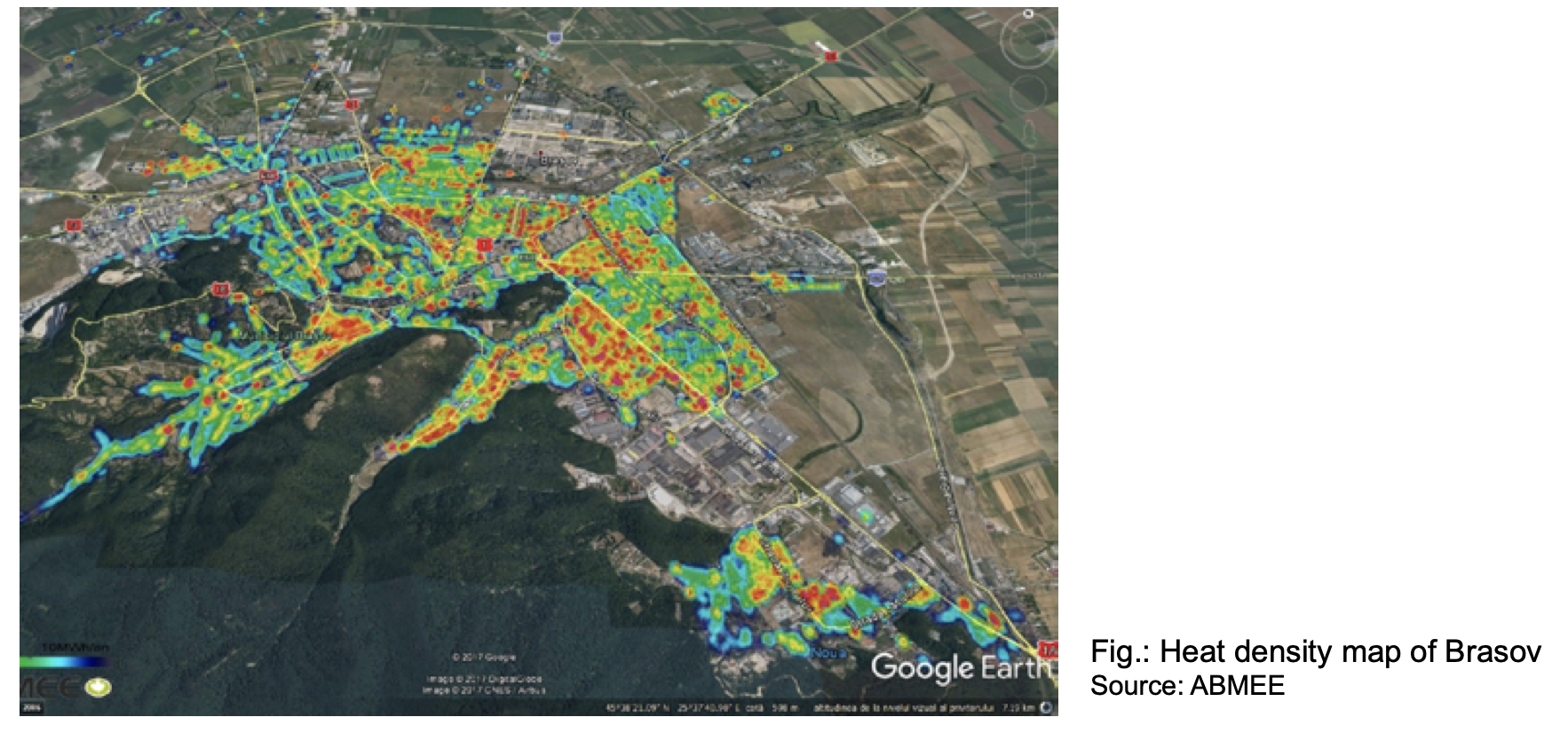Romania
2017
- Type : Energy planning
- Size : Local community
- Area : Residential
Environmental benefit
Ensuring energy security and cost- efficient heat supply
Share
Romania
2017
- Type : Energy planning
- Size : Local community
- Area : Residential
Environmental benefit
Discover this use case online

The DH system is split into 4 areas and each area is using a mix of energy sources like natural gas heat boilers and heat purchased from an external company. The purchased heat is generated from highly-efficient cogeneration plants using natural gas, part of the DH system.
The reference scenario reflects a development where no certain additional action will be undertaken and the current supply situation will persist within the considered time horizon. The heat for the main district heating networks will be purchased from the private company producing heat in highly-efficient natural gas-fired cogeneration engines and heat only boilers at a certain price expected for the investigated time horizon. Investments will be made to replace 50% of the old parts of the network (not renewed within the last 10 years).
In the alternative scenario there will be networks optimization to cut down the losses in each of the district heating systems to 20% of annual produced heat. Also 50% of the not yet renewed networks will be renewed within the considered time horizon to be able to connect additional consumers. Additionally, the public local service will install own production units (A small biomass boiler, solar thermal panels + heat storage, a heat pump and also refurbishment of district heating plants (transforming substations to district heating plants) in the different parts of the district heating system to bring supply closer to the final consumers. Additional heat will be purchased from the private company, part of Brașov DH system.
A quantitative assessment of the following selected policies has been performed: long term loans for DH infrastructure, support of connection to DH network, CO2 tax, subsidies for RES technologies in DH, zoning.
The quantitative assessment showed that single policies are not enough to tackle all problems district heating faces in Brașov. It is necessary to combine different policies to ensure a modernization of the DH systems and to bring back confidence and the required consumers, being:
• Public service following a long-term investment horizon with a very low profit and therefore assuring the long term loans
• Subsidies for RES DH technologies
• A CO2 tax of around EUR 35 / tCO2 should be target
• Zoning
• Support to the final consumers for connecting/ reconnecting to the DH network
• Increasing the share of RES in the DH system
• Making consumers the main concern
• Further collaborating with the current producer
 R-ACES has received funding from the European Union’s Horizon 2020 research and innovation programme under grant agreement N° 892429
R-ACES has received funding from the European Union’s Horizon 2020 research and innovation programme under grant agreement N° 892429
The DH system is split into 4 areas and each area is using a mix of energy sources like natural gas heat boilers and heat purchased from an external company. The purchased heat is generated from highly-efficient cogeneration plants using natural gas, part of the DH system.
The reference scenario reflects a development where no certain additional action will be undertaken and the current supply situation will persist within the considered time horizon. The heat for the main district heating networks will be purchased from the private company producing heat in highly-efficient natural gas-fired cogeneration engines and heat only boilers at a certain price expected for the investigated time horizon. Investments will be made to replace 50% of the old parts of the network (not renewed within the last 10 years).
In the alternative scenario there will be networks optimization to cut down the losses in each of the district heating systems to 20% of annual produced heat. Also 50% of the not yet renewed networks will be renewed within the considered time horizon to be able to connect additional consumers. Additionally, the public local service will install own production units (A small biomass boiler, solar thermal panels + heat storage, a heat pump and also refurbishment of district heating plants (transforming substations to district heating plants) in the different parts of the district heating system to bring supply closer to the final consumers. Additional heat will be purchased from the private company, part of Brașov DH system.
A quantitative assessment of the following selected policies has been performed: long term loans for DH infrastructure, support of connection to DH network, CO2 tax, subsidies for RES technologies in DH, zoning.
The quantitative assessment showed that single policies are not enough to tackle all problems district heating faces in Brașov. It is necessary to combine different policies to ensure a modernization of the DH systems and to bring back confidence and the required consumers, being:
• Public service following a long-term investment horizon with a very low profit and therefore assuring the long term loans
• Subsidies for RES DH technologies
• A CO2 tax of around EUR 35 / tCO2 should be target
• Zoning
• Support to the final consumers for connecting/ reconnecting to the DH network
• Increasing the share of RES in the DH system
• Making consumers the main concern
• Further collaborating with the current producer
